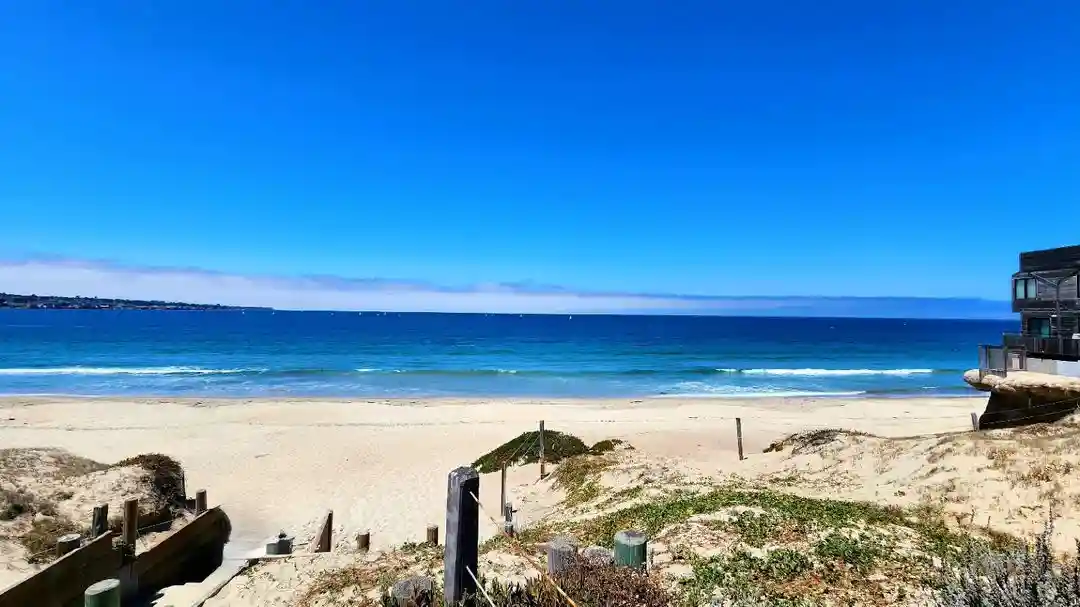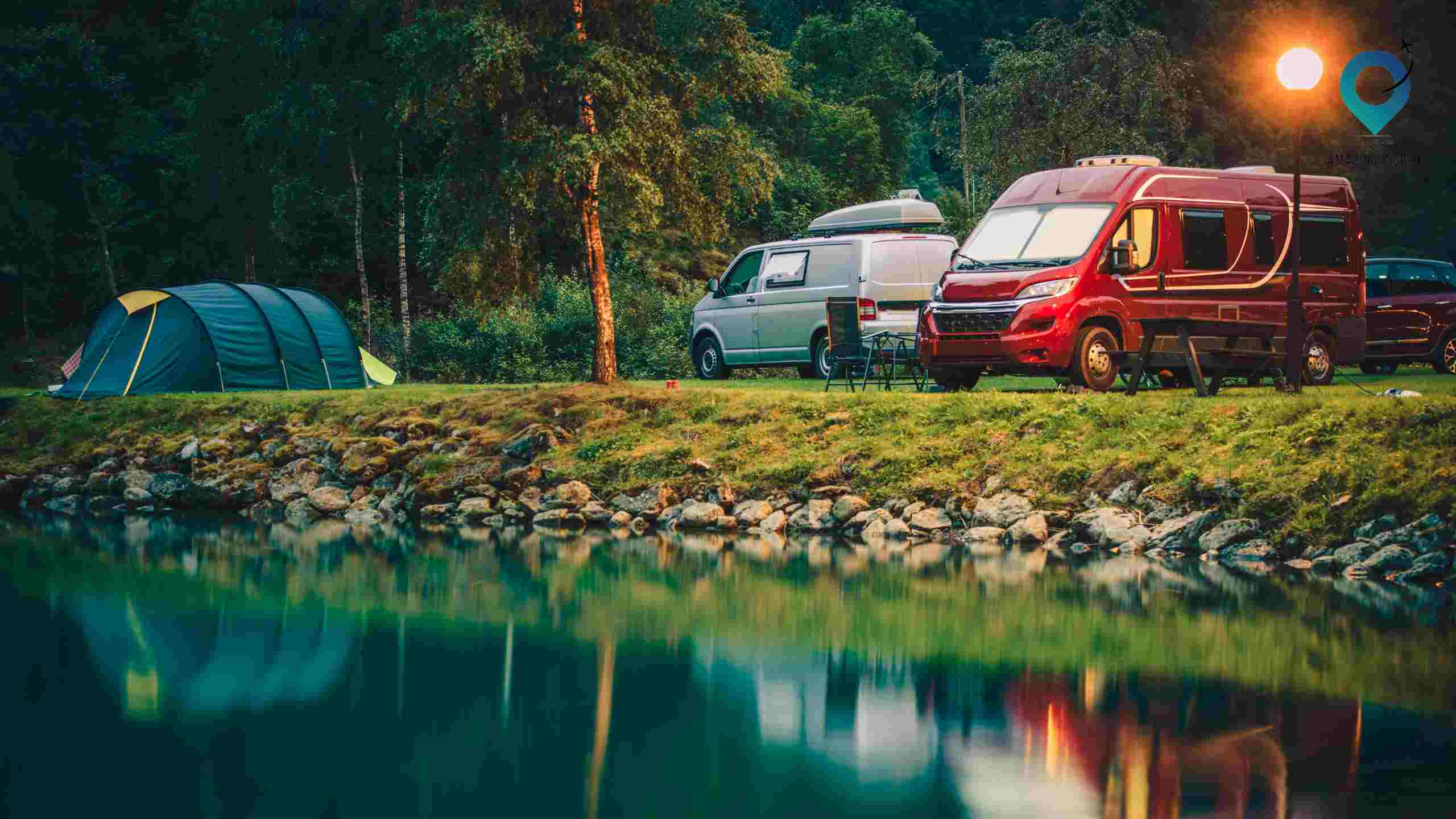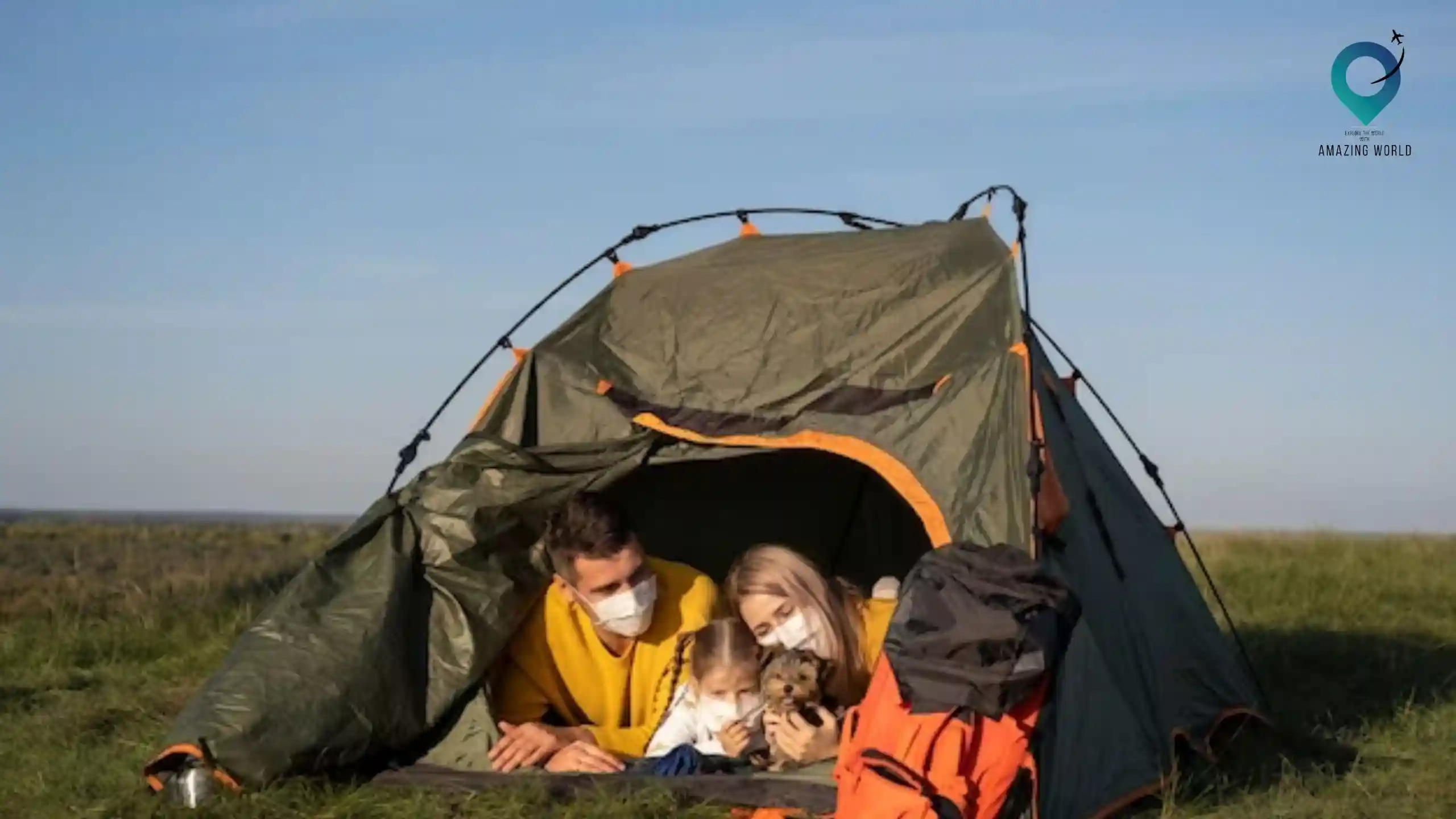Savoring the Outdoors: A Guide to Campfire Cooking and Unforgettable Outdoor Meals

There’s a certain magic that comes alive when the sun dips below the horizon, casting a warm glow over the rugged landscape, and the mesmerizing dance of flames beckons under the star-studded sky. In the heart of nature’s embrace, a culinary journey begins—where the crackling campfire becomes not just a source of heat, but the stage for creating unforgettable memories. Welcome to the world of campfire cooking, where the fusion of nature’s bounty and culinary artistry ignites a symphony of flavors and experiences.
Picture this: the aroma of sizzling meats and roasted vegetables mingles with the scent of pine and earth, creating an intoxicating ambiance that awakens the senses. As twilight deepens, the fire’s glow paints a warm canvas for camaraderie, storytelling, and the joy of shared meals. Whether you’re a seasoned outdoors enthusiast or a novice camper, campfire cooking offers a taste of adventure, a dash of creativity, and a sprinkle of togetherness that’s hard to replicate anywhere else.
Join us as we kindle the flames of exploration and embark on a journey that transcends mere sustenance. From mastering the art of fire-building and discovering the nuances of temperature control to crafting gourmet delights that dance upon your taste buds.
this guide will take you on an expedition through the captivating world of campfire cuisine. But it’s not just about cooking—it’s about forging connections, cherishing nature, and creating stories that linger long after the embers have faded. So, grab your apron and stoke the fire of curiosity, because we’re about to set out on an adventure that will ignite your love for the outdoors and the flavors that await.
Essential Equipment and Campfire Safety
Campfire Essentials: Choosing the Right Fire Pit, Safety Tools, and Fuel Options
When venturing into campfire cooking, the choice of equipment plays a crucial role in ensuring a safe and enjoyable experience. Selecting the right fire pit is paramount, whether it’s a portable fire ring or a designated campfire area. Ensure it complies with local regulations and is positioned on non-flammable ground. Acquire essential safety tools such as a fire extinguisher, water source, and a shovel to control and extinguish the fire if needed.
Fire Safety: Responsible Campfire Practices, Extinguishing Fires, and Leave No Trace Principles
Responsible campfire practices are essential to prevent wildfires and preserve natural habitats. Adhere to established fire regulations and maintain a safe distance from vegetation. Always have a plan for extinguishing the fire completely before leaving. Practicing Leave No Trace principles involves minimizing impact on the environment. Make sure to disperse ashes and unburned wood, pack out all trash, and leave the site as pristine as you found it.
Cooking Equipment: Comprehensive List of Utensils, Pots, Pans, and Tools
Equipping yourself with suitable cooking tools is key to achieving culinary success in the outdoors. Consider a set of heat-resistant utensils, sturdy pots and pans, and a grilling grate for even cooking. Don’t forget long-handled tongs and oven mitts for safe handling. If you plan to use open flames, having a tripod or hanging system can provide versatile cooking options. Remember, investing in quality, durable equipment will enhance your campfire cooking experience.
Mastering the Campfire Cooking Techniques

Building a Fire: Step-by-Step Guide to Building a Safe and Efficient Campfire for Cooking
Building a campfire for cooking requires more than just stacking logs. Start with a base of tinder and kindling to ignite the fire. Gradually add larger logs to create a sustainable flame. Proper airflow is essential, so arrange logs in a teepee or log cabin style. Be mindful of fire size, keeping it manageable for cooking purposes while minimizing environmental impact.
Direct vs. Indirect Heat: Understanding the Two Main Cooking Methods and Their Applications
Campfire cooking involves both direct and indirect heat methods. Direct heat, cooking directly over flames, is ideal for quick-searing meats and roasting vegetables. Indirect heat, utilizing hot coals or embers, is perfect for slow-cooking and baking. Understanding these methods allows you to tailor your cooking technique to the dish you’re preparing.
Adjusting Temperature: Techniques to Control Heat Intensity for Various Cooking Needs
Controlling the temperature of a campfire is essential for successful cooking. To raise or lower the heat, adjust the distance between the cooking surface and the flames. Raising the grate or pan creates indirect heat, while lowering it intensifies direct heat. Skillfully managing temperature variations lets you achieve perfectly cooked meals, from a gently simmering stew to a sizzling steak.
Gathering Ingredients in the Wild
Wild Edibles: Identifying Safe-to-Eat Plants, Mushrooms, and Berries in Your Surroundings
Foraging adds a fascinating dimension to campfire cooking. Learning to identify safe-to-eat plants, mushrooms, and berries in your environment enhances your outdoor culinary skills. Educate yourself on local flora and fauna, and be absolutely certain about the edibility of any wild ingredients you gather. Responsible foraging practices ensure minimal impact on the ecosystem.
Fishing and Foraging: Tips for Fishing and Gathering Ingredients Sustainably and Ethically
Catching your own fish or gathering ingredients like clams and mussels from the shore can provide fresh and unique additions to your outdoor meals. Before fishing or gathering, research local regulations and size limits to ensure you’re acting sustainably. Respect the natural habitat and only take what you need to maintain the delicate balance of the ecosystem.
Local Sourcing: Planning Meals Around Local Ingredients to Enhance the Authenticity of Your Outdoor Dining Experience
Embrace the essence of your surroundings by incorporating locally sourced ingredients into your campfire dishes. Visiting farmers’ markets or local shops near your camping site can provide you with fresh produce, meats, and other products. Not only does this approach enhance the flavor of your meals, but it also connects you to the local culture and supports the community.
Quick and Easy Campfire Recipes

Foil Packet Meals: Simple Recipes Combining Protein, Vegetables, and Seasonings in Foil Pouches
Foil packet meals are a campfire cooking classic for a reason. Create customized pouches filled with protein, such as chicken or fish, along with your favorite veggies and seasonings. Seal the pouch tightly and place it on the campfire coals or grate. The enclosed environment allows the flavors to meld while the ingredients cook to perfection.
Skewers and Kebabs: Creative Ideas for Assembling Skewers with Meat, Vegetables, and Marinades
Skewers offer endless possibilities for creative campfire cooking. Thread marinated meats, colorful vegetables, and even fruits onto skewers for easy grilling. The skewers cook quickly over direct heat and are a hit for both kids and adults. Experiment with different combinations and marinades to discover your favorite flavor profiles.
One-Pot Wonders: Hearty Stews, Soups, and Chili Recipes Cooked in a Single Pot Over the Fire
Simplify your campfire cooking by preparing hearty one-pot meals. Soups, stews, and chili come together in a single pot over the fire, allowing flavors to meld into comforting concoctions. Combine ingredients like beans, vegetables, meats, and broth for a satisfying meal that’s easy to cook and even easier to clean up.
Gourmet Delights for Adventurous Cooks
Dutch Oven Magic: Elevating Your Outdoor Cooking with Classic Dutch Oven Recipes Like Casseroles, Bread, and Desserts
A Dutch oven is a versatile tool that opens up a world of gourmet possibilities in campfire cooking. From savory casseroles and braised dishes to freshly baked bread and decadent desserts, the Dutch oven’s ability to distribute heat evenly produces remarkable results. Mastering the art of temperature control is key to achieving culinary excellence with this classic cookware.
Grilling Perfection: Techniques for Grilling Juicy Steaks, Flavorful Vegetables, and Even Pizzas Over an Open Flame
Grilling is a beloved campfire cooking technique that offers a variety of delectable outcomes. Achieving grilling perfection involves mastering heat zones, prepping ingredients, and understanding cooking times. Grill juicy steaks, flavorful vegetables, and even inventive options like campfire-grilled pizzas for an outdoor dining experience that’s both sophisticated and satisfying.
Baking Outdoors: Trying Your Hand at Baking Bread, Biscuits, and Sweets in a Campfire Setting
Elevate your campfire cuisine by delving into the world of outdoor baking. With a little preparation, you can craft bread, biscuits, and sweets that rival those from a traditional oven. Techniques like steam-baking and using a Dutch oven allow you to achieve golden-brown crusts and tender interiors, delivering freshly baked delights to your wilderness dining table.
Sweet Endings by the Fire
Campfire Desserts: Indulgent Treats Like S’mores Variations, Grilled Fruit, and Decadent Campfire Pies
No campfire cooking journey is complete without delightful desserts. Elevate the classic s’mores with creative variations, such as using different types of chocolate or adding fruits like bananas or strawberries. Grilled fruit offers a healthy and scrumptious option, while campfire pies—filled with fruit, custard, or even savory ingredients—promise a satisfying end to your outdoor feast.
Hot Beverages: Cozy Drink Recipes to Warm Up Your Evenings, Including Campfire Coffee and Mulled Cider
As the sun sets and the temperature drops, warm beverages provide comfort and camaraderie around the campfire. Brew a rich cup of campfire coffee using methods like cowboy coffee or pour-over setups. Mulled cider infused with aromatic spices offers a fragrant and soothing option to savor as you relax by the fire, adding a touch of warmth to your evenings.
Storytelling and Bonding: Exploring the Communal Aspect of Campfire Cooking and Sharing Stories Around the Fire
Beyond the culinary pleasures, campfire cooking fosters a sense of community and bonding. Gathered around the flames, share stories, legends, and personal experiences that enrich your connection with fellow campers. The crackling firelight creates an atmosphere that encourages storytelling, nurturing friendships and memories that are as enduring as the embers themselves.
Leave No Trace and Eco-Friendly Practices
Minimal Impact Cooking: Tips for Reducing Waste, Cleaning Up Properly, and Respecting the Environment
Campfire cooking can coexist harmoniously with nature through responsible practices. Minimize waste by packing ingredients in reusable containers and avoiding single-use items. Clean up meticulously, ensuring no food scraps are left behind. Dispose of waste properly, and if available, utilize established waste disposal facilities to minimize your impact on the environment.
Biodegradable Alternatives: Choosing Eco-Friendly Cooking Supplies and Utensils
Make conscious choices by opting for biodegradable and eco-friendly cooking supplies. Bamboo plates, wooden utensils, and compostable containers are excellent alternatives to traditional disposable items. By embracing these choices, you reduce the long-term impact on the environment, showcasing your commitment to preserving the beauty of the great outdoors.
Spreading Awareness: Promoting Responsible Outdoor Cooking Practices Among Fellow Campers
As an outdoor enthusiast and campfire cooking aficionado, you have the opportunity to inspire others. Share your knowledge about Leave No Trace principles and eco-friendly practices with fellow campers. By spreading awareness, you contribute to creating a culture of responsible outdoor cooking that ensures the landscapes you cherish remain pristine for generations to come.
Also, if you are looking best hotels and Homestay deals then we recommended book your hotels and homestay with priceline.com
Conclusion
In this culinary odyssey of campfire cooking, you’ve uncovered the heart and soul of outdoor dining. From mastering safety and techniques to crafting gourmet delights and sweet endings, you’ve embraced the fire’s warmth and the flavors of the wild. Remember, campfire cooking isn’t merely about sustenance—it’s about kindling connections, embracing nature’s bounty, and creating memories that endure.
As the flames dance and the aroma of your creations fills the air, you’ve realized that campfire cooking is an art form that transcends food. It’s a journey of exploration, bonding, and savoring every moment. And as the embers fade, leaving only memories and the legacy of responsible practices, you’ll forever cherish the flavors, stories, and experiences that were crafted under the open sky.
Thank you for embarking on this culinary adventure, for choosing to create memories through the crackling flames, and for leaving behind footprints of joy and respect for the natural world. As you continue to cook up memories, may the fire within you continue to burn brightly.
How much did you like Our detailed Savoring the Outdoors: A Guide to Campfire Cooking and Unforgettable Outdoor Meals? Review Also, please share these Blogs with your friends on social media.
Related Article –
Campfire Cooking Most Asked Questions (FAQ’s)
What equipment do I need for campfire cooking?
Essential equipment includes a fire pit or designated area, safety tools like a fire extinguisher and shovel, cooking utensils, pots, pans, grilling grate, and optional items like a Dutch oven and skewers.
How do I build a campfire for cooking?
Building a campfire involves creating a base of tinder and kindling, arranging larger logs, and ensuring proper airflow. Consider the direct and indirect heat methods for cooking and adjust the distance between the flames and cooking surface to control temperature.
Can I gather ingredients in the wild for campfire cooking?
Yes, you can gather wild ingredients, but it's crucial to identify safe-to-eat plants, mushrooms, and berries. Responsible foraging practices and knowledge of local regulations are essential to minimize environmental impact.
What are some easy campfire recipes?
Quick and easy campfire recipes include foil packet meals with protein and veggies, skewers with meat and vegetables, and one-pot wonders like stews and chili. These recipes require minimal preparation and are perfect for outdoor cooking.
How can I cook gourmet meals over a campfire?
Gourmet campfire cooking can be achieved with a Dutch oven for dishes like casseroles and bread. You can also grill steaks, vegetables, and even bake desserts like pies using a variety of techniques.
What are some delicious campfire dessert ideas?
Campfire desserts range from classic s'mores variations to grilled fruit and decadent campfire pies. Explore creative options using the open flame for a sweet ending to your outdoor meals.
How can I practice eco-friendly campfire cooking?
Adopt eco-friendly practices by reducing waste, using biodegradable cooking supplies, and adhering to Leave No Trace principles. Properly dispose of waste, clean up thoroughly, and share responsible cooking practices with fellow campers.
Is campfire cooking suitable for vegetarians and vegans?
Absolutely! Campfire cooking offers a range of options for vegetarians and vegans. Grilled vegetables, plant-based skewers, and inventive recipes using plant-based ingredients can create flavorful outdoor meals.
What is the communal aspect of campfire cooking?
Campfire cooking fosters a sense of community and bonding. Sharing stories, laughter, and meals around the fire creates a unique atmosphere that enhances the overall experience of outdoor dining.

Meet David Hoper, a passionate travel Blog writer with 7+ years of experience in travel content. Through his exemplary storytelling and engaging narratives, he shares his experiences and brings destinations to life. With a keen eye for detail and a love for exploration, he has cultivated a diverse portfolio of travel blogs that inspire and inform readers worldwide.









1 comment
Engaging in outdoor cooking, whether grilling marshmallows or preparing a full meal, adds a delicious dimension to the camping experience.